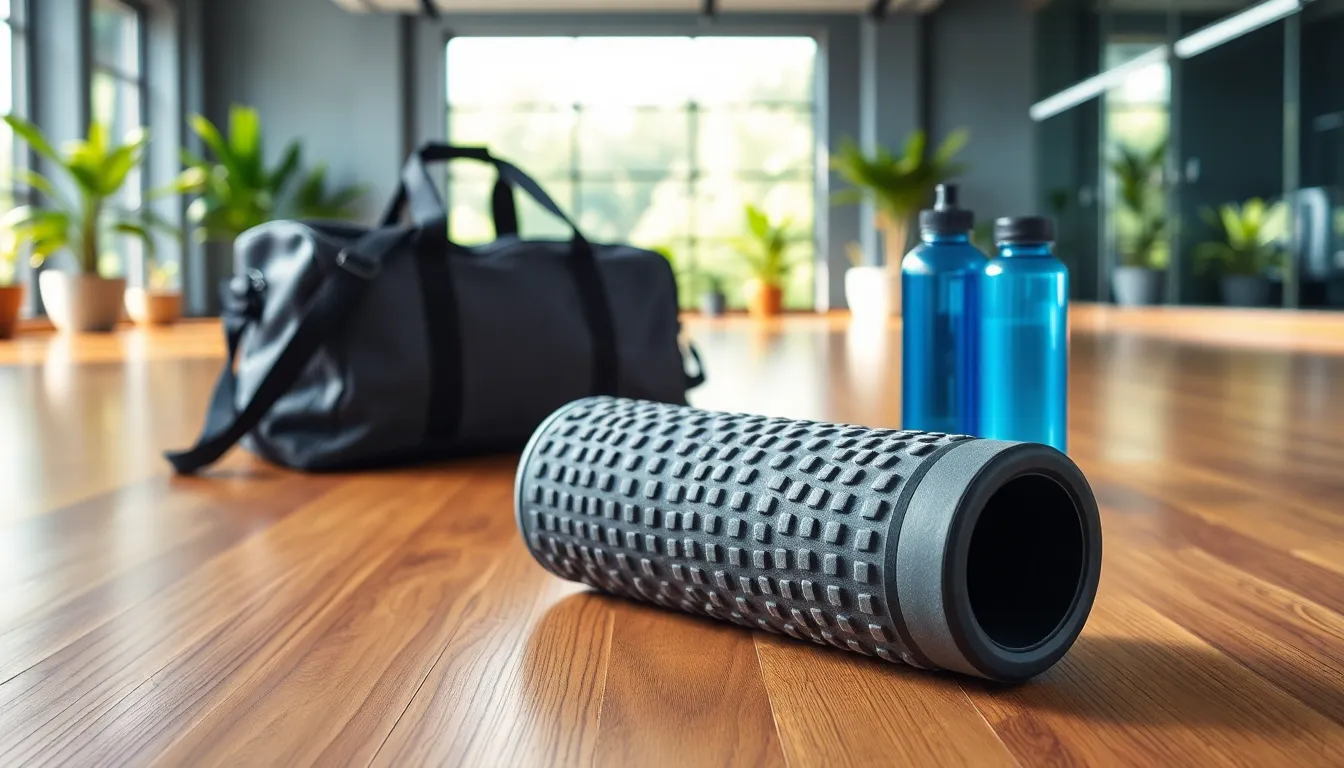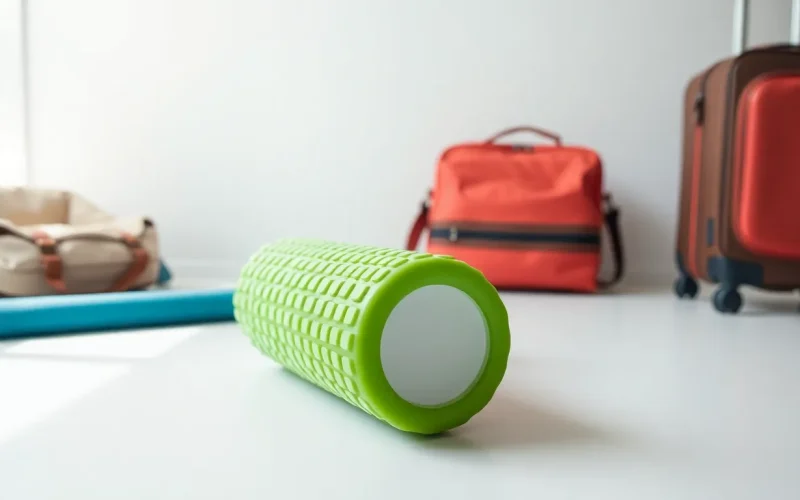Table of Contents
ToggleTraveling can be a workout in itself, but don’t worry, you don’t have to sacrifice your fitness routine while on the road. Enter the travel foam roller: a compact powerhouse that offers relief and recovery right palm-sized and ready for action. Imagine unrolling your way to pain-free muscles after a long flight or a grueling hike. Sounds dreamy, right? In this text, you’ll discover everything there is to know about these magical tubes of foam that fit easily in your suitcase and in your fitness regime.
What Is a Travel Foam Roller?

A travel foam roller is a smaller, more portable version of the traditional foam roller, designed specifically for those who are always on the go. Think of it as the compact cousin of the regular foam roller, it packs the same recovery punch without hogging the space in your luggage. Typically, these rollers measure around 12 to 18 inches in length and feature a variety of densities to target different muscle groups effectively. In essence, travel foam rollers are crafted to provide muscle relief, improve circulation, and enhance mobility, all while being lightweight and easy to carry.
Benefits of Using a Travel Foam Roller
Using a travel foam roller comes with a range of incredible benefits. First off, it acts as an effective tool for myofascial release, which means it helps alleviate tightness in the muscles and fascia. Decreased muscle soreness is another perk, making it perfect for post-workout recovery. Whether someone has just run a marathon or has spent hours sitting on a plane, rolling out those knots can feel rejuvenating. Also, using a foam roller may enhance flexibility and mobility, vital for keeping active while traveling.
Another notable benefit is its ability to improve blood circulation. Rolling helps flush out toxins from the muscles and promotes oxygen delivery. This might sound mysterious, but in simpler terms, you’re aiding your body in recovery while reducing the risk of injury. Last but not least, using a travel foam roller is a fantastic stress-relief practice, turning moments of downtime into valuable self-care sessions. Who knew you could turn your airport wait into a comforting relief moment.
Choosing the Right Travel Foam Roller
When selecting the right travel foam roller, there are several factors to consider. Size and density top the list. Lightweight options typically weigh around one pound or less, ideal for frequent flyers. Some models even have collapsible designs, making them incredibly convenient.
Next, density matters. Softer foam rollers suit beginners and those with sensitive muscles, while denser options provide deeper pressure for experienced users who need a more intense massage.
Also, consider the surface texture. Smooth surfaces offer a gentler experience, while releasing some tension. Conversely, textured rollers may dig into the muscles more effectively, making them better for targeted relief.
Finally, keep personal preferences in mind. Color might seem trivial, but if it’s going to live in your carry-on, it should be something appealing to you. After all, you’ll want to reach for it in those travel-induced moments of stiffness.
How to Use a Travel Foam Roller Effectively
Using a travel foam roller effectively takes practice, but once someone gets the hang of it, the rewards are immense. To start, find a flat surface to lie on, ensuring you have enough space to roll out your muscles comfortably.
Begin with the larger muscle groups, like the quadriceps and hamstrings. Position the roller under the target area, applying body weight and rolling slowly over the surface for about 30 seconds at a time. Focus on any tight spots and adjust pressure by shifting your body weight.
For areas like the lower back, the foam roller can be placed perpendicular to the spine. Rolling gently side to side can relieve tightness effectively. For smaller muscle groups, like calves or forearms, it often helps to use one leg or arm at a time for added pressure.
Listening to the body is key, if it hurts (the bad kind of hurt), ease up. After a good roll, it’s a smart move to stretch the muscles to maintain the gains built through foam rolling.
Travel Foam Roller vs. Regular Foam Roller
The difference between a travel foam roller and a regular foam roller is akin to comparing a spirited little sports car to a sturdy, full-sized SUV. Both have their place and value, yet they serve different needs. Travel foam rollers are designed for mobility and convenience, perfect for stashing in a backpack or carry-on bag. They usually have a smaller diameter and lighter materials, which helps them stand out in crowded luggage.
Regular foam rollers, in contrast, come in various sizes suited for more extensive muscle coverage and deeper pressure. They are typically bulkier and might not mesh well with someone’s travel aspirations. But, for home users, they can offer a more profound release for larger muscle groups.
Both types can deliver immense benefits, but for those who prioritize travel, the compact foam roller is arguably a game-changer in maintaining fitness while globe-trotting.
Tips for Incorporating a Travel Foam Roller into Your Routine
Incorporating a travel foam roller into a fitness routine starts with consciously setting a time aside to roll out those kinks. A pre-workout roll can help prime the muscles, increasing blood flow and flexibility. No one wants tight hamstrings affecting their performance.
Post-workout sessions are equally vital: spending time rolling out tension can promote quicker recovery, leaving travel bugs feeling fresh for their next workout or adventure. It can be particularly helpful to schedule breaks during long flights or road trips. While others wrestle with cramped legs, one can find a quiet corner and get rolling wherever needed.
Try setting a daily reminder to make foam rolling a habit, much like brushing your teeth. Establishing a routine is often the most effective way to make sure it fits seamlessly into any lifestyle. Traveling often means last-minute plans: being flexible in finding moments to roll helps maximize the benefits.





